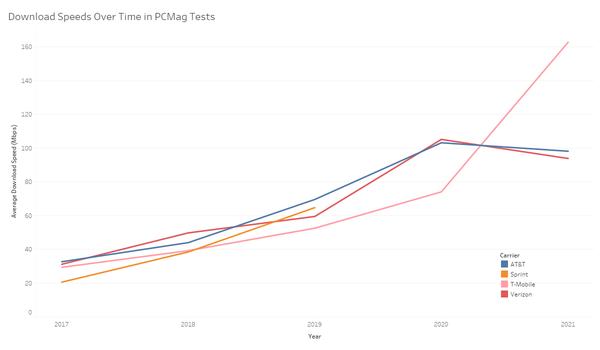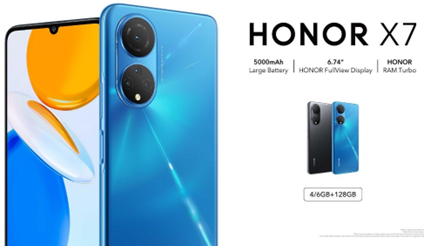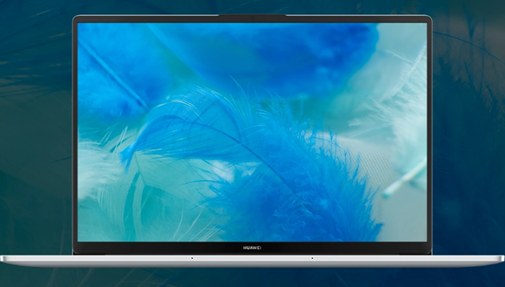Fastest Mobile Networks 2021
It's T-Mobile's year at last. The carrier's new mid-band 5G network is the only nationwide 5G that’s markedly faster than 4G, earning T-Mobile its first-ever PCMag award for America's fastest mobile network.
In our 12th annual test, drivers traveled a total of 10,626 miles, surveying 30 major US metro areas and six rural regions to find out the state of 5G from AT&T, T-Mobile, and Verizon. T-Mobile took a commanding lead in 5G, winning 24 cities and rural regions to AT&T's eight and Verizon's two; we also saw one tie between T-Mobile and Verizon and one tie between T-Mobile and AT&T.
Click on the map above or scroll down to see the specific winners and neighborhood testing locations for each of our cities. (Interested in mobile network speeds north of the border? Check out Fastest Mobile Networks Canada.)
Why go to all this effort? Because millions of people need to choose smartphones and carriers, and the best choice for you depends heavily on where you are.
Almost every adult American now has a smartphone. According to Statista, there were just about 294 million smartphone users in the US in 2020; for comparison, that year, the US Census estimates there were 258 million adults in the country.
All of those phones have to connect to networks. Since the merger between T-Mobile and Sprint, we now have three giant players in the US. All of them are slapping up billboards promoting their 4G and 5G networks with words like “biggest,” “fastest,” and “most reliable.” Back in 2010, as smartphones started to become popular, we began our independent gauge of the mobile networks to help people choose carriers based on facts, not ads.
Since then, plenty of other tests and awards have cropped up. They all have their advantages. Ours are consistency and transparency. We use the same devices, in the same places, at the same times, to make sure the network is the only difference. Then we tell you exactly where we go to run our tests, down to the neighborhood, and what we did there. Sometimes we even tell you what we had for dinner. We want to help you make a carrier choice you feel confident about, based on solid local data.
This year, for the first time, that choice is likely to be T-Mobile. T-Mobile’s winning secret isn't much of a secret: It's mid-band spectrum, which T-Mobile calls "ultra-capacity" 5G. Now covering more than 165 million people in cities large and small, these airwaves (bought with the Sprint acquisition) let T-Mobile's network give consistent results between 150Mbps and 500Mbps of download speed. That’s far better than AT&T and Verizon’s 5G can do in most areas, and it secured T-Mobile’s win.
Faster download speeds signal more capacity on a network. T-Mobile's widespread added capacity has also let it launch Magenta Max, the nation's first truly unlimited, no-deprioritization 5G plan, and its $60/month unlimited home broadband service.
If you’re a T-Mobile customer and not seeing results like these, it’s probably for one of two reasons. First, to get on T-Mobile’s new wild ride, you need a 5G phone; T-Mobile 4G still falls short of the competition. Looking at 4G-only results, AT&T dominated nationwide as surely as T-Mobile did overall. If you’re using a 4G phone, your T-Mobile service will likely be unremarkable.
And if you’re out in the countryside and don’t often head to the city, T-Mobile might not be the best carrier for you. The carrier is doing great in the nation’s biggest metro areas, but when we look at small cities and areas away from interstate highways, especially in the western US, it's clear that T-Mobile has to do more work to get better coverage. In those regions, once again, AT&T dominated.
The map below shows everywhere our drivers traveled this year, from sea to shining sea.
T-Mobile Skyrockets, Others Flatline
If you haven’t upgraded your phone or looked at your plan in the past few years, you’re going to be blown away by how different the world is in 2021.
To put it simply, T-Mobile was behind the competition when using 4G and low-band 5G. Then mid-band completely changed the game, just in the past year.
Even in the cities it covers, T-Mobile 5G isn’t everywhere. But it covers enough area in those cities to make a real difference, and coverage is improving every month. This chart shows how often our T-Mobile 5G phone made use of 5G in each of the cities and regions we tested—from 90% of the time in Chicago down to only 36% in New Orleans. (But T-Mobile still won in New Orleans, because 5G is generally sparse there.)
5G availability from the other carriers doesn’t really matter—yet.
Verizon's millimeter-wave 5G is the fastest 5G in America. We saw peak speeds over 2Gbps on Verizon’s network. But there just isn't enough Verizon mmWave to make a difference for most customers, and it's growing too slowly. Verizon says it's been expanding its coverage, but our tests found about the same amount of mmWave as last year: 3.27% of metro-area tests in 2021 compared with 2.82% in 2020. (We ran our tests in a somewhat different set of cities in 2020, due to pandemic restrictions on travel, so these numbers aren't completely comparable.)
Without any dedicated mid-band or low-band 5G airwaves, Verizon’s “nationwide 5G” uses a technology called DSS (dynamic spectrum sharing) that borrows 4G channels to serve 5G. Last year, we found that it actually damaged Verizon’s 5G performance, because the DSS system was inefficient and poorly configured. This year, Verizon worked out the kinks, and its 5G connections are generally slightly faster than its 4G ones. You don’t need to turn off 5G any more, as we suggested people do late last year.
Verizon’s overall speeds declined a bit from 2020 to 2021, though, possibly because of congestion. Nationwide, Verizon appears to have less capacity than the other two carriers at the moment, which might be why it hasn’t joined T-Mobile and AT&T in offering truly unlimited plans. This just emphasizes how critical it is that Verizon go big with its rollout of C-band 5G next year. For more, see the best and worst cities for Verizon 5G.
AT&T’s complex 4G network also doesn’t have much of a 5G component. In most places, AT&T layers a slim channel of 5G on top of its 4G to give you that 5G icon. We also found tiny patches of AT&T mmWave coverage in some cities, but not enough to be notable.
AT&T won our 2019 award based on its excellent 4G network. It just barely lost in 2020 because Verizon’s mmWave 5G gave Verizon a slight boost. In our 2021 tests, we found that AT&T’s 5G network results were often slower than its 4G network, so we generally used its 4G results as its best-network scores. AT&T’s 4G network is still excellent, but it didn’t show real improvement in the past year.

A New Phone: Now or Later?
If you’re on T-Mobile or Metro and you don’t have a phone capable of accessing mid-band 5G, you should get one now. The good news is that every 5G phone sold by the carriers supports mid-band, and many of those phones are inexpensive. Anything from an iPhone 12 or a Samsung Galaxy S21, all the way down to a OnePlus Nord N200 will access the best speeds on T-Mobile’s network. For more suggestions, see our roundup of the best T-Mobile phones.
If you’re on AT&T or Verizon, the switch is less urgent. On both carriers, existing 4G phones will give you solid coverage and speeds nationwide. If you’re buying a new phone anyway, make sure to get one that has C-band, the mid-band 5G system that could make a big difference for both AT&T and Verizon starting next year. For more on making that upgrade, see our favorite 5G phones. on the flip side, if you don't want to give up your old phone, check out the fastest cities for 4G by carrier.
Why T-Mobile Is Our Winner
In 2017, carriers placed their bets on the future of 5G. T-Mobile placed the right one.
We saw something similar happen with 3G and 4G. AT&T dominated the 3G era because, unlike Verizon, it selected a globally standard technology (GSM) that had a solid advancement path. Verizon then pushed all its chips onto the table for 4G LTE and won our Fastest Mobile Network award almost every year from 2011 through 2018.
Then Verizon got distracted, or misled, by the promise of mmWave 5G in 2018. This wasn't entirely its fault; mmWave was what the FCC was selling at the time. But mmWave has turned out to have very short range and to be difficult to build out. It's a great network if you can get it, but you just can't get it very often. I've generally seen radiuses of 800 to 1,000 feet per tower with mmWave.
T-Mobile, on the other hand, had a smarter (and luckier) play. It bought Sprint to take advantage of Sprint's massive cache of largely unused mid-band airwaves and turned them all over to 5G. Since launching that mid-band 5G network in mid-2020, T-Mobile now covers more than 165 million people.
Though we couldn't tell mid-band 5G from low-band 5G results on T-Mobile, about 75% of our tests with T-Mobile 5G in metro areas showed speeds over 100Mbps, which is a good sign of mid-band. Mid-band is the 5G that makes the most difference for the most people. (T-Mobile has a little bit of mmWave too, but it doesn't make a big deal about that.)
Verizon and AT&T will have a chance to catch up. They both went in big purchasing C-band, mid-band airwaves similar to T-Mobile's, and those airwaves become available to use next year. They'll have to build fast to match T-Mobile's head start, though.
The two older carriers have a potential advantage over T-Mobile: backhaul. When I recently praised T-Mobile’s excellent 5G performance in my own neighborhood, wireless watchers correctly responded that T-Mobile’s airwaves are capable of much greater speeds, but they’re restricted by the fiber going down into the internet from T-Mobile’s towers. AT&T and Verizon, which are landline ISPs, own many fiber lines; T-Mobile doesn’t. So AT&T and Verizon need to add airwaves to their fiber networks, and T-Mobile needs to improve its fiber connections to make the most of its airwave advantage.
A Digital Divide
In our scoring, only 40% of the rating is for absolute speed. The other 60% goes to various measures of reliability, including whether a network hits certain minimum performance thresholds and whether it's available at all. On that front, things become a little more complex for T-Mobile.
T-Mobile showed the highest percentage of fast results (270Mbps to 700Mbps). But it also showed a higher percentage of slow results (0Mbps to 30Mbps) than AT&T did.
Pulling apart some of the variables here shows what T-Mobile needs to do. The gap is primarily on 4G results and shows up most outside of cities. If we look only at 5G results in the 30 cities we visited, T-Mobile's weakness goes away.
The charts above show what percentage of our tests were, essentially, slow versus fast. Looking only at 5G tests in our 30 core cities, T-Mobile had the fewest slow results of any carrier, as well as by far the most results over 200Mbps. But when we included all tests (both 4G and 5G) and the rural areas, T-Mobile had far more tests below 30Mbps than AT&T did, although it also showed more results over 300Mbps than any other carrier.
In a July 27 blog post, T-Mobile president of technology Neville Ray said the carrier is headed for 200 million people being covered by its higher-quality "ultra-capacity" 5G network by the end of this year. That's still only 60% of the US population, though. The rest will be covered by T-Mobile's lower-speed, low-band 5G network. In rural areas (where mid-band is less likely to be available), T-Mobile showed more slow-5G results than AT&T did. Closing that gap—making sure all T-Mobile users get the sort of performance that its 5G users in cities are getting—is key.
Looking More Closely at Rural 5G
Our results focus primarily on large urban areas. About 17% of our score is devoted to results outside the major cities, which is pretty close to the 19.3% of the US population living outside major metro areas, according to the US Census.
Of our 10,626 total miles traveled, 7,175 were outside major metro areas. The more rural the area, the better AT&T did and the worse T-Mobile did. AT&T won four out of six of our rural regions, particularly crushing T-Mobile on coverage in the Northwest and the Carolinas.
As we drove, we found that T-Mobile has done a good job of expanding coverage to even midsize cities and towns and along interstate highways. It's in the rural stretches between the towns where T-Mobile still tends to fail.
The FCC recently released new independent coverage maps that provide a counterbalance to the official carrier maps. The two sets of images below show our own results compared with the FCC and carrier maps for an area around Clarksville, Virginia, and Stovall, North Carolina. On the left, the orange dots show T-Mobile dead spots, and the blue ones show AT&T dead spots.
The FCC’s map pretty much mirrors ours in terms of T-Mobile dead spots; T-Mobile’s map seems more optimistic. But the FCC’s and AT&T’s maps didn’t always reflect the dead zones we saw in AT&T’s network. This may be because AT&T network drops came from reasons other than pure coverage—network saturation, for example.
We also took a closer look at six smaller cities:
They ended up splitting between AT&T and T-Mobile. T-Mobile took Allentown, Rehoboth Beach, and St. Augustine—all along the Eastern seaboard—while AT&T took Crescent City, Laramie, and Lake Charles.
Network availability was dramatically lower in small cities and rural regions than in larger cities. Where all three networks were equally available, T-Mobile generally ruled. But in Laramie, for instance, T-Mobile's network covered only 51% of the area to AT&T’s 71%, and in Lake Charles, T-Mobile had 90% coverage to AT&T’s 100% coverage. When you can’t get on a network at all, it doesn’t matter how fast that network is. To win at the network-speed game in these regions, T-Mobile needs to keep putting up towers.
For more, see our story on where we found mobile dead zones and hotspots.
Mid-Band 5G Is the Future
I'm thrilled that T-Mobile has started to show its mid-band 5G coverage on its official coverage map, because it's clear that this technology is the future of 5G for most people. The carrier's range and capacity will only grow as it continues to build and add equipment, and AT&T and Verizon will have to hustle to catch up. The FCC could play a role, too, making more mid-band spectrum available for 5G networks.
We're going to keep paying attention to the rural-urban digital divide in coverage. Our rural regions had dramatically lower speeds than our cities did, and we saw regular dropouts in coverage in some of those areas, though we never did in the larger cities. As we speed along to new services and ideas, no one should be left behind.
Our Testing Methodology
To conduct our tests, we used a pair of Samsung Galaxy S21 phones on each network. The S21 is available for every carrier and supports all of the carriers’ latest network technologies. For each pair, one phone was locked to 4G using the Samsung Band Selector app; the other phone was allowed to use 4G or 5G as available. The phones all had SIM cards supplied by the carriers, which don’t slow their connections based on any kind of data cap. Each phone ran a speed test every two minutes. The 4G and 5G phones staggered their tests so two phones weren’t hitting the same network at once.
We drove around 30 cities, stopping in at least 12 locations per city for 15 minutes each. To get results for our six rural regions, we drove on a mix of interstate highways and smaller roads.
In analysis, for each test stop, we picked the best result between the 4G and 5G devices. With so much overlap between 4G and 5G and so many people still using 4G phones, it doesn’t make sense to ding 4G just for being 4G. Raw speed matters more than whether your phone has a 4G or 5G icon in the corner.
Test results at each location were averaged into an overall result for that location. Then, results for all locations were averaged into an overall city score, with all of the traveling results collected between stops being averaged into two virtual “locations.”
Consistent, usable data speed is more beneficial to the average consumer than spectacular peak speed. That’s why 40% of our score is earmarked for whether data transfers consistently met the FCC’s minimum threshold for broadband: 25Mbps down, 3Mbps up.
We used a weighted average with the following variables:








